Table of Contents
ToggleHow to Conduct International Market Research
Introduction
International market research is an essential step for businesses looking to expand globally. It provides valuable insights into target markets, customer preferences, competition, and regulatory environments. Conducting thorough research helps businesses mitigate risks, optimize market entry strategies, and ensure sustainable growth in international trade. This blog explores the key methods, tools, and steps for conducting international market research effectively.

Why International Market Research is Important
1. Identifying Market Opportunities
International market research helps businesses discover potential markets, assess demand, and identify underserved customer segments.
2. Understanding Consumer Behavior
Cultural differences, purchasing power, and consumer preferences vary across countries. Researching these aspects enables businesses to tailor their products and marketing strategies accordingly.
3. Evaluating Competition
A thorough market analysis provides insights into competitors’ strengths, weaknesses, pricing strategies, and marketing efforts.
4. Reducing Market Entry Risks
By studying economic, political, and regulatory factors, businesses can anticipate potential risks and develop risk-mitigation strategies.
5. Optimizing Pricing and Marketing Strategies
Analyzing market data helps businesses set competitive pricing, choose the right distribution channels, and create effective promotional campaigns.
Steps to Conduct International Market Research
1. Define Research Objectives
Clearly outline what you want to achieve with your research. Common objectives include:
Identifying target markets
Understanding customer preferences
Assessing competition
Evaluating trade regulations and compliance
2. Identify Target Markets
Use key indicators such as GDP, population size, economic stability, and industry trends to determine which countries present the best opportunities for your business.
3. Collect Secondary Data
Secondary data refers to existing information gathered from:
Government reports and trade statistics
Industry research reports (e.g., IBISWorld, Statista)
World Bank and International Trade Centre (ITC) databases
Competitor websites and annual reports
4. Conduct Primary Research
Primary research involves gathering first-hand information through:
Surveys and Questionnaires: Collect feedback from potential customers on their preferences, needs, and purchasing behaviors.
Interviews: Engage with industry experts, distributors, and local business partners for market insights.
Focus Groups: Conduct discussions with target customers to understand cultural influences and product perceptions.
Test Marketing: Launch pilot projects in select markets to evaluate customer response.
5. Analyze the Competitive Landscape
Assess key competitors’:
Market share and growth trends
Product offerings and pricing strategies
Brand positioning and marketing efforts
Strengths and weaknesses
6. Understand Trade Regulations and Compliance
Different countries have unique legal and regulatory requirements. Research aspects such as:
Import/export duties and tariffs
Licensing and certification requirements
Trade restrictions and sanctions
Consumer protection laws
7. Evaluate Distribution and Supply Chain Logistics
Assess the best channels to distribute your products internationally, such as:
Direct exports
Partnering with local distributors
E-commerce platforms
Setting up local subsidiaries
8. Assess Economic and Political Risks
Consider external factors that may impact your business, including:
Currency fluctuations
Political stability
Trade agreements and tariffs
Local labor laws and business environment
9. Use Market Research Tools and Software
Leverage digital tools to streamline market research:
Google Trends: Analyze global search trends
SEMrush & Ahrefs: Assess online competition and digital marketing strategies
UN Comtrade & ITC Trade Map: Study international trade flows
SurveyMonkey & Typeform: Conduct online surveys
Statista & IBISWorld: Access industry reports and market data
10. Interpret Data and Develop Strategies
Once data is collected, analyze trends, identify patterns, and develop actionable strategies. Consider:
Adjusting pricing models based on market demand
Localizing marketing campaigns for cultural relevance
Choosing the most effective market entry strategy (direct export, franchising, partnerships, etc.)
Case Study: Successful International Market Research
Example: Starbucks’ Expansion in China
Conducted in-depth research on Chinese consumer preferences for tea over coffee.
Adjusted product offerings to include tea-based beverages.
Partnered with local businesses to understand cultural nuances and consumer behavior.
Focused on premium store experiences to match Chinese customers’ preference for luxury brands.
Conclusion
Conducting international market research is essential for businesses looking to expand globally. By systematically gathering and analyzing market data, companies can make informed decisions, reduce risks, and maximize their chances of success in international trade. Utilizing a mix of secondary and primary research methods, competitive analysis, and digital tools will provide businesses with the insights they need to thrive in global markets.
